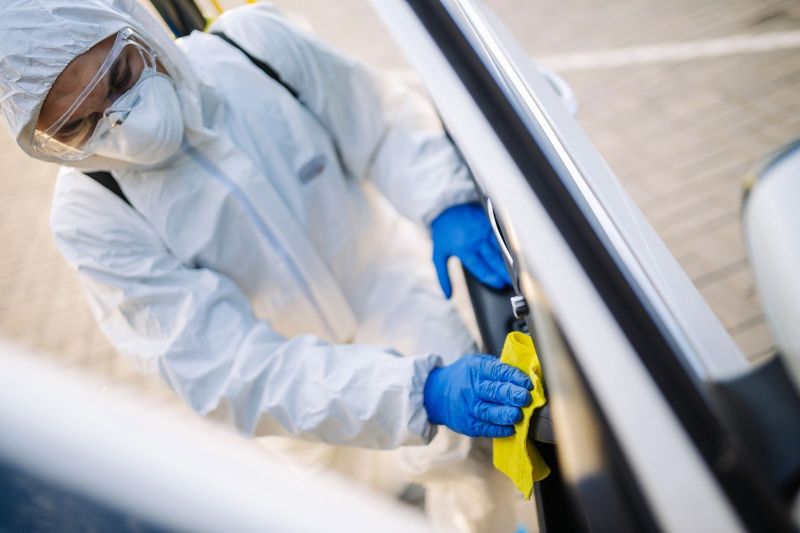Biohazards are a significant concern in today's world. From accidents in the home to environmental disasters, the potential for exposure to dangerous biological and chemical agents is ever-present. In this article, we will explore the essential aspects of biohazard cleanup to help you protect your loved ones and ensure a safe environment. Understanding the ABCs of biohazard cleanup is not only crucial for immediate safety but also for long-term well-being.
A - Awareness: Know the Risks
The first step in biohazard cleanup is being aware of the potential risks. Biohazards can encompass a wide range of materials, from bodily fluids and medical waste to toxic chemicals and contaminated water. Understanding the specific risks associated with a biohazardous situation is essential for an effective response.
- Biological Hazards: These include blood, feces, urine, and other bodily fluids, as well as materials contaminated with pathogens like bacteria, viruses, and fungi. These substances can carry diseases and infections, making proper cleanup and disposal critical.
- Chemical Hazards: Chemical biohazards involve toxic substances that can pose severe health risks when exposed to humans or the environment. Examples include pesticides, heavy metals, and hazardous chemicals.
- Radiological Hazards: While less common, radiological biohazards involve exposure to ionizing radiation, such as in the case of nuclear accidents or medical radiation leaks. These situations require specialized expertise for cleanup.
B - Biohazard Cleanup Procedures
Once you're aware of the risks, it's vital to follow proper biohazard cleanup procedures. Biohazard cleanup should be performed by trained professionals who have the knowledge and equipment to handle these situations safely. Attempting to clean up biohazardous materials without proper training and equipment can lead to severe health risks.
- Personal Protective Equipment (PPE): All individuals involved in biohazard cleanup must wear appropriate PPE, including gloves, masks, goggles, and suits to minimize direct contact with hazardous materials.
- Containment: The area containing the biohazard should be properly sealed off to prevent the spread of contaminants. This may involve isolating the affected space and using warning signs to keep people away.
- Decontamination: Proper decontamination procedures should be followed to ensure that all surfaces and objects exposed to the biohazard are thoroughly cleaned and disinfected. This includes using EPA-approved disinfectants and following specific guidelines for different types of biohazards.
- Safe Disposal: After cleanup, all biohazardous materials must be safely and properly disposed of according to local regulations. This may involve incineration, chemical treatment, or other specialized processes.
C - Calling in the Professionals
In most cases, biohazard cleanup should not be attempted by untrained individuals. The risks associated with handling biohazards are substantial, and improper cleanup can lead to severe health consequences. Instead, it is essential to call in the professionals who specialize in biohazard cleanup.
- Professional Expertise: Biohazard cleanup professionals have the knowledge, training, and experience to handle a wide range of biohazard situations safely and efficiently. They understand the specific protocols required for different types of biohazards.
- Specialized Equipment: Biohazard cleanup experts have access to specialized equipment, such as high-efficiency particulate air (HEPA) filters, industrial-strength disinfectants, and personal protective gear, ensuring that the cleanup is thorough and safe.
- Legal Compliance: Professionals are well-versed in local, state, and federal regulations governing biohazard cleanup and waste disposal. They will ensure that all legal requirements are met during the cleanup process.
Biohazard cleanup is a critical component of maintaining a safe and healthy environment for your loved ones. It is not something to be taken lightly or attempted without proper training and equipment. Being aware of the potential risks, understanding the procedures, and knowing when to call in the professionals are the ABCs of biohazard cleanup that will help safeguard your family and community.
In any biohazard situation, your first priority should be the safety and well-being of your loved ones. By following the essential steps outlined in this article and recognizing the importance of professional expertise, you can take proactive measures to protect your family from the dangers posed by biohazards. Remember, when it comes to biohazard cleanup, knowledge and caution are your most potent allies.

